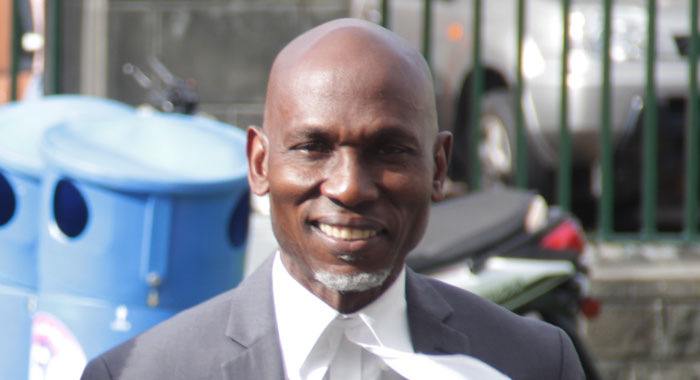By *Jomo Sanga Thomas
(“Plain Talk” Feb. 19, 2021)
Black History Month is here again — and we continue treating Caribbean History like an academic subject only to be remembered in February, instead of a compulsory subject for every Caribbean student, all-year-round.
We remember Marcus Garvey, Dr. Martin Luther King and Nelson Mandela. However, we overlook those giants and icons still standing tall among us and designated as ‘national heroes’, but not given equal treatment regionally.
Advocates for change are pressing for urgent upgrading of the History curriculum at our schools to reflect real contemporary Caribbean History. However, it’s still left (primarily) to individual principals and teachers to find innovative ways to introduce new subjects to classes of young Caribbean minds getting ready to shape the region’s tomorrow.
We are necessarily re-writing Caribbean History in our own images and likeness. Still, it’s also necessary to understand that many teachers than imagined have also been mostly mis-educated about our history, and the process of re-learning also applies to them.
The knowledge gap between today’s students and yesterday’s teachers was technically bridged by technology. Still, IT has also widened the gap by the comparative ease with which students consume the info at their fingertips.
Yet, with all the knowledge at hand, students and teachers still need guidance — at times — about which Caribbean heroes they are searching for and why.
Our Caribbean Heroes are very much lost on Our Caribbean.
Arthur Lewis and Derek Walcott are still regarded as “Saint Lucia’s two Nobel Prize-winners”; and few know that Saint John Pearce, from Guadeloupe, was the first Caribbean writer to win a Nobel Prize for Literature.
Saint Lucians (and Caribbean people) still don’t know about John Quinlan, who solely represented Africans and Blacks in all British colonies at the Royal Commission on Reparations commissioned by Queen Victoria in 1887; or that (ex-slave) Freedom Fighters who established a republic on Saint Lucia in the 1790s were defeated by a combined invading fleet of 15,000 French and British troops, then captured and shipped to be sold back into slavery in England in 1796 on a ship named ‘London’, only to die when it wrecked off the coast of Devon.
Our students still essentially don’t know about Haiti’s roles in reshaping the world, the roles of Frantz Fanon and Aime Cesaire of Martinique in raising Black Consciousness in Africa, who was Barbados’ “Bussa” or Guyana’s “Cuffy”, or Jamaica’s Paul Bogle or Queen Nanny, or Amy Jacques Garvey and Amy Ainsworth Garvey.
Suriname is part of CARICOM, but most regional citizens know nothing about its Maroons and their history or their heroes; we only now accept there was never any “Caribs” and “Arawaks”; and Caribbean students still know precious little about ‘Leaper’s Hill’ in Grenada or paramount chief Chatoyer of St. Vincent and the Grenadines (SVG), or this small CARICOM nation (SVG) being the origin of the over 800 thousand Garifunas who populate the coasts of Belize, Guatemala, Honduras and Nicaragua. We still don’t know Tim Daisy, Danny Williams or the mighty Shake Keane.
Four decades after their deaths, Caribbean students are still not being taught about the contributions of Walter Rodney and Maurice Bishop, Cheddi and Janet Jagan; nor about the February 18, 1970 revolts in Trinidad & Tobago, the February 25, 1980, military takeover in Surinam, the December 1978 “coup” in Dominica or the March 13, 1979, Grenada Revolution.
Enough may exist about the traditional Black Heroes embraced by the world. Still, there are untold numbers of others, dead and alive, who have also made silent and unheralded contributions that have changed humanity.
For example, the world still hardly knows it wasn’t South Africa’s Dr. Christiaan Barnard who invented heart transplant surgery, but instead his Black gardener Hamilton Naki (in 1967); or that it was a black man who introduced vaccinations to the United States.
Or that Black inventors invented the following things we use and see every day: almanac (1791), elevator (1867), fountain pen (1890), mail box (1891), Pencil Sharpener (1897), spark plug (1839), stethoscope (1876), telephone transmitter (1884), Traffic Lights (1923), air condition unit (1949) and thermostat control (1960) and cell-phone wireless technology (the 1980s).
Black History Month is observed in Africa and America, Europe and The Caribbean. However, it’s still tough to find a continuing compendium of ‘Blacks in History’ or ‘Black Creators and Creations’. In many cases – such as in South Africa and the United States — Black inventions were only accepted if painted white.
And then there are the home-grown indigenous solutions to age-old historical problems that are acknowledged for ceremonial purposes, but not entered into the annals of history, like the invention of the steel pan in Trinidad & Tobago, the only musical instrument invented in the 20th century, but which is copyrighted offshore.
Or a celebration of the old farmhand on a cocoa plantation in Grenada honoured during the Revolution in 1980 for having discovered how to use usually discarded parts of a popular local fruit to protect cocoa trees against a parasitic pest effectively.
Black Heroes exist everywhere, heralded or not; but the word “Black” also has, over time, become subject to its unfair share of ethnic engineering.
The word has become so universal today that it’s presented with such adjectives as “Part-Jamaican” and “Part-Asian” and “Half Black”, or “Black American” — as in the cases of President Barack Obama, Vice President Kamla Harris, ex-US Chief of Staff Colin Powell and tennis star Tiger Woods.
But then, if purity is applied exclusively, those documenting Black History today and tomorrow can easily and unfortunately erase the real stories of the critical roles of Whites like Joe Slovo who helped lead the guerrilla struggle alongside the ANC in South Africa, or Caribbean leaders of non-Black complexions like Jamaica’s Michael Manley, SVG’s Ralph Gonsalves, Guyana’s Janet Jagan and Saint Lucia’s Kenny Anthony.
Such ethnic-cleansing avoidance is necessary now more than ever when at least one bearded preacher of Black Power in the 70s is today preaching that at least one Caribbean nation ‘is not yet ready for a Black prime minister!’
The veteran St. Lucian journalist and colleague, Earl Bousquet wrote this piece. We adopt it, with minor additions, with his permission.
*Jomo Sanga Thomas is a lawyer, journalist, social commentator and a former Speaker of the House of Assembly in St. Vincent and the Grenadines.
The opinions presented in this content belong to the author and may not necessarily reflect the perspectives or editorial stance of iWitness News. Opinion pieces can be submitted to [email protected].







Jomo some years ago in the 1990s the London wreck was discovered off the English coast. At the time I was researching the history of St.Vincent, more specifically the history of Indian indentureship, but got into the entire history of St.Vincent. Looking at the date when the London wrecked (1796) it would coincide with the end of the 2nd Carib War (1795) and the banishment of the Balliceaux survivors to Ruatan, but I also suspect that many of those captured Caribs/Kalinago/Garifuna were also placed on board the London, which incidentally had played a role in the Carib War.
Tiger woods plays golf not tennis